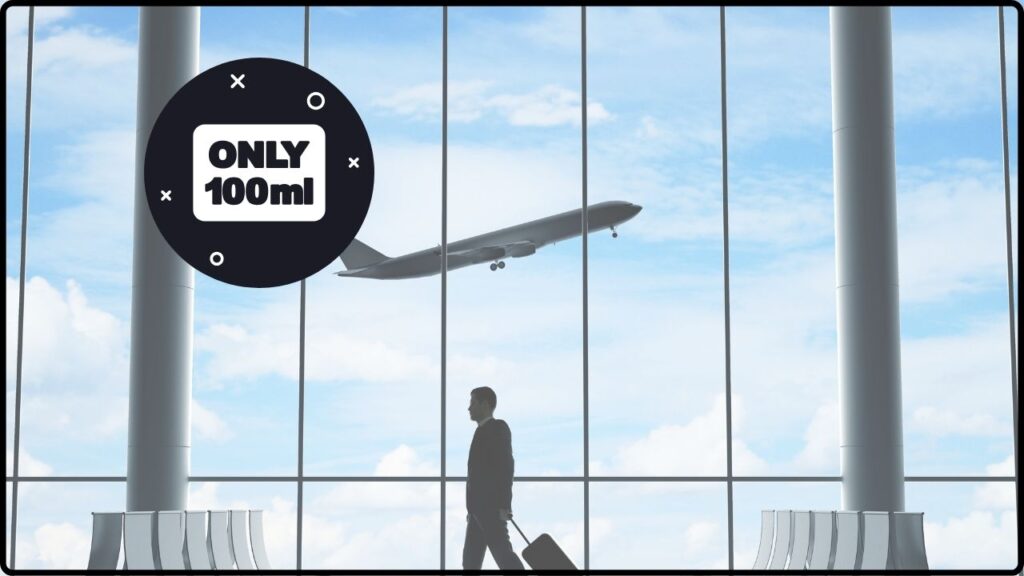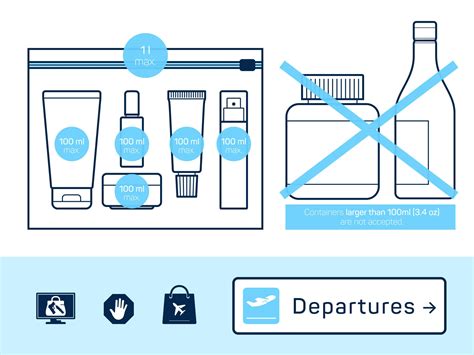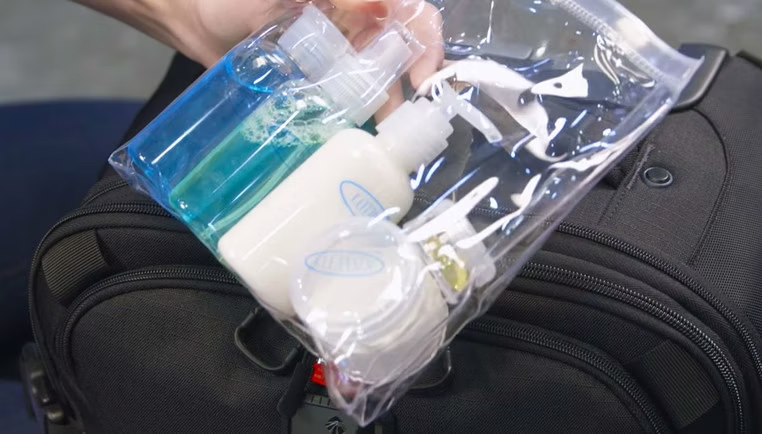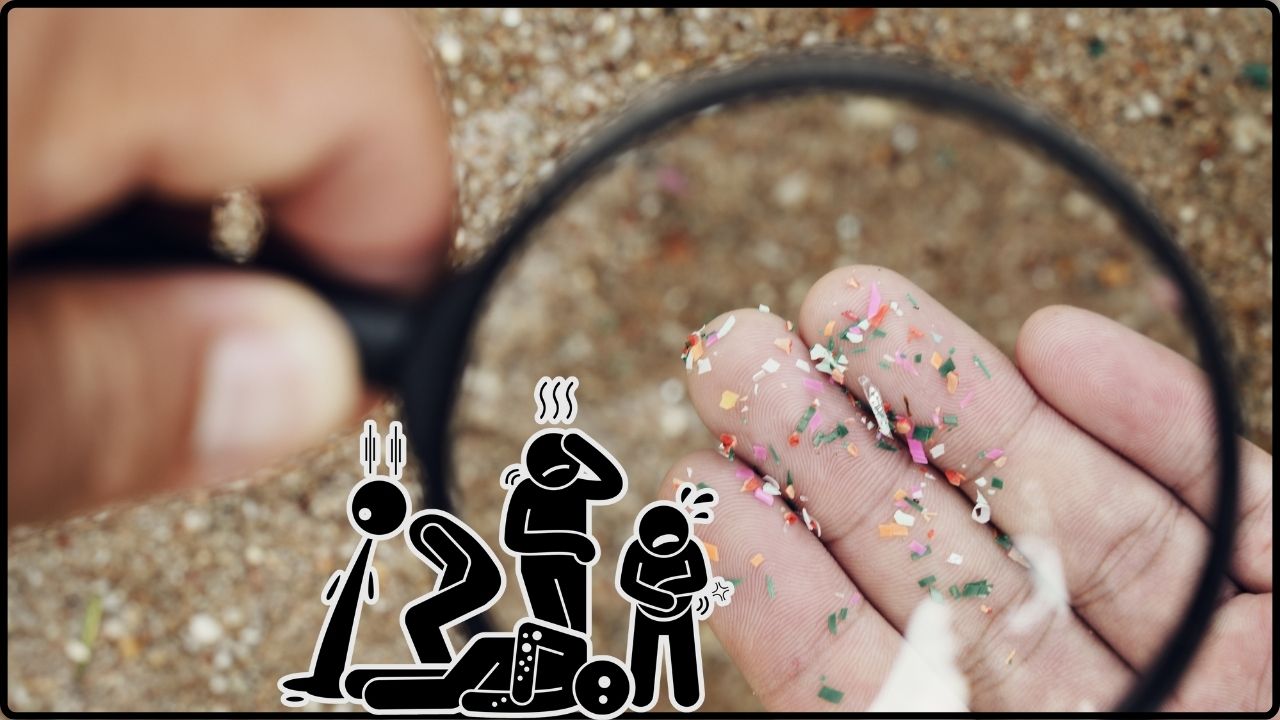
TSA’s 3-1-1 Rule Explained: When you’re rushing through airport security, the last thing you want is a TSA officer pulling your bag aside because you packed a jumbo-size lotion or forgot to separate your liquids. These seemingly small mistakes can cost you time, money, and frustration—especially when you’re about to board an international flight. That’s why understanding TSA’s 3-1-1 Rule is essential.
Whether you’re a first-time flyer heading to Europe or a seasoned business traveler making another hop to Asia, this rule applies to everyone flying from, to, or within the United States. This guide will walk you through everything you need to know, from what’s allowed to how to pack, with practical examples, real-life advice, and official resources.
TSA’s 3-1-1 Rule Explained
The TSA 3-1-1 Rule might seem like a minor detail, but it plays a major role in aviation safety and can dramatically impact your travel experience. With just a little preparation—downsizing your liquids, packing correctly, and knowing the exceptions—you’ll breeze through security like a pro. It’s all about traveling smarter, not harder. And when in doubt? Double-check with the official TSA What Can I Bring Tool before you fly.
| Feature | Description |
|---|---|
| What is the 3-1-1 rule? | 3.4 oz (100 mL) containers, in 1 clear quart-sized bag, 1 bag per traveler |
| Why it matters | Ensures flight safety by preventing liquid-based explosives |
| Applies to | All passengers flying to, from, or within the U.S. |
| Exemptions | Medications, baby formula, breast milk, and medically necessary liquids—must be declared at screening |
| Penalty for violations | Confiscation of items, potential delays, additional screening, or fines |
| Latest update | Advanced CT scanners at select airports; future potential for relaxed rules |
| Official source | TSA 3-1-1 Liquids Rule |
What Is the TSA 3-1-1 Rule?
The TSA 3-1-1 Rule is a set of security guidelines designed to control the amount and type of liquid items passengers can carry onto an aircraft in their hand luggage. The numbers are an easy way to remember the basic requirements:
- 3 refers to liquids in containers that are 3.4 ounces (100 milliliters) or smaller.
- 1 quart-sized, clear, resealable plastic bag is used to store those containers.
- 1 bag per traveler is allowed in carry-on baggage.
So yes, you can bring that tiny travel toothpaste and your mini perfume, but not your full-size sunscreen unless it goes in your checked bag.
Why the 3-1-1 Rule Was Created?
The rule was implemented in 2006 after British intelligence foiled a terrorist plot involving liquid explosives intended for transatlantic flights. The U.S. Department of Homeland Security, in collaboration with the TSA, responded with immediate policy changes to reduce the risk of similar attacks.
According to DHS and TSA records, the restrictions have significantly increased passenger safety and continue to evolve based on global threat assessments.
What Counts as a Liquid?
It’s not just water bottles and soda. The TSA defines a liquid as anything that you can pour, spray, smear, spread, or squeeze. This includes:
- Toothpaste
- Shaving cream
- Shampoo and conditioner
- Lotions and oils
- Perfumes and colognes
- Gels (like aloe or hair gel)
- Liquid makeup (foundation, mascara)
- Aerosol sprays
Even semi-solid foods like yogurt or peanut butter count as liquids.
If you’re unsure, ask yourself this: “Can it spill or smear?” If the answer is yes, it belongs in your quart-size bag.

Exceptions to the Rule
While the 3-1-1 rule is strict, there are reasonable exemptions. These items are allowed in larger quantities, but they must be declared to TSA officers at the checkpoint:
- Prescription medications
- Over-the-counter drugs (in liquid form)
- Baby formula, milk, juice, and baby food
- Breast milk
- Medical liquids, including saline solution, insulin, or liquid nutrition
- Disability-related items, such as cooling gel packs or creams
These do not need to be in your quart-sized bag but should be separated and shown to a TSA agent during screening.
TSA’s 3-1-1 Rule Explained: How to Pack Liquids Properly (Step-by-Step)
- Choose Travel-Sized Containers
Make sure each liquid container is 3.4 ounces (100 mL) or smaller. You can purchase pre-filled travel-size products or refill your favorites using reusable travel bottles. - Use a Quart-Sized Zip Bag
Only one bag per passenger. It must be clear and resealable. Gallon-size or colored bags are not allowed. - Organize Neatly
Pack items vertically or lay them flat so they’re visible. TSA agents appreciate organization—it speeds up screening. - Place It in an Easy-to-Reach Spot
Don’t bury your liquids at the bottom of your carry-on. Keep the bag accessible to remove during security screening. - Separate Exempt Items
Declare all exempt items (medical, baby-related) before the bag goes through the scanner.
Traveling Internationally: What You Need to Know
Flying abroad? The 3-1-1 rule applies on departure from U.S. airports—but your destination country may have its own version. Most countries—including the UK, EU, Canada, and Australia—follow similar liquid rules.
Here’s what to keep in mind:
- Duty-Free Purchases
Liquids bought in duty-free shops (e.g. perfume, alcohol) are exempt if:- Purchased after security
- Sealed in tamper-evident bags
- Accompanied by a receipt dated within 48 hours
- Returning to the U.S.
U.S. Customs may allow you to carry duty-free liquids if purchased internationally and properly packed, but always verify with your airline or U.S. Customs and Border Protection.

TSA PreCheck and Global Entry: Do They Change the Rule?
No. If you’re enrolled in TSA PreCheck or Global Entry, you’ll enjoy faster screening, but the 3-1-1 rule still applies. That means:
- No need to remove shoes or laptops
- But you still need to follow the liquid restrictions
Learn more about expedited travel programs:
- TSA PreCheck
- Global Entry
TSA Liquid Rule for Kids & Families
Traveling with little ones? TSA offers some relief for parents:
- You’re allowed to bring more than 3.4 oz of baby formula, milk, juice, and baby food.
- These items do not need to be in the quart-sized bag.
- You must remove and declare these items at the checkpoint.
Pro tip: Put all baby liquids and gear in one tote or section of your carry-on to make the inspection process smoother.
Smart Alternatives: Solid Versions of Liquids
If you’re a frequent traveler, consider switching to solid alternatives. Not only do they bypass the 3-1-1 rule, but they also reduce clutter and spills.
Here are popular swaps:
- Bar shampoo and conditioner
- Stick deodorant
- Toothpaste tablets
- Solid lotion or perfume sticks
- Makeup wipes (not considered liquids)
These items can stay in your bag and don’t require a quart-sized pouch.

Real-Life Traveler Story
Take Jessica, a frequent flyer from Chicago. On her way to Tokyo, she forgot to transfer her moisturizer into a travel-size container. TSA confiscated it. Worse, it delayed her screening, and she barely made her connection in San Francisco. That’s a common, easily preventable mistake—and exactly why this guide matters.
Major London Travel Disruption: TFL Closures That’ll Leave You Stranded – Full List Inside
Goodbye Passports? Apple’s New Digital ID in iPhone Wallet Is Changing Global Travel Forever
Traveling to the U.S. in 2025? Here’s Exactly How Much Cash You Can Bring Without Trouble
Technology on the Horizon: Could the Rule Disappear?
Thanks to next-generation CT scanners, the need to remove liquids may eventually go away. These machines can create 3D images of bags, spotting threats more accurately.
Some U.S. airports have started using them, including:
- Hartsfield-Jackson Atlanta
- Chicago O’Hare
- LAX
- Phoenix Sky Harbor
But don’t toss your quart bag just yet. The TSA states a full nationwide rollout won’t happen until at least 2040.











